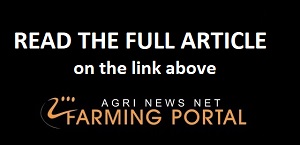Artificial insemination (AI) involves placing semen directly into the uterus. Embryo transfer involves transferring fertilised ova from a donor female to a recipient female who then rears the calf.
Artificial insemination is used in both stud and commercial herds, whilst embryo transfer tends to be used mainly when breeding stud stock. The use of injected hormones is necessary in embryo transfer programs and are often used in AI programs to synchronise oestrous cycles.
 Cattle have stopped breeding, koalas die of thirst: A vet's hellish diary of climate change
Cattle have stopped breeding, koalas die of thirst: A vet's hellish diary of climate change
Why use artificial insemination
A cattle breeder may choose to utilise artificial insemination (AI) in their herds for several reasons including:
- genetic improvement
- access to genetics from across the world
- access to genetics from bulls that they would not otherwise be able to afford to purchase
- to reduce the number of bulls required
- access to breeds that are not available locally
- to join a bull with more females than he would be able to serve naturally in one mating season
- to mate individual cows to specific sires
- potential increased value of progeny from AI sires
- to reduce the risk of infection from venereal diseases
- Artificial breeding is the use of technologies such as artificial insemination and embryo transfer.
The long term effect of commercial exploitation of dairy arimal in isolation from bull is changing their sexual behaviour and it is becoming difficult to detect heat as cows in heat are expressing the heat sign and sysmtoms with a low intensity and frequency during the heat stage. This is making heat detection for AI very difficult in term of efficiency and accuracy and conception rate is reducing due to this and to some extent due to increase in milk yield stress. If we can keep bull around females besides sexual act, they exchange lot of emotions also, which is proved by experiments. Animals have volatile chemical exchangers call pheromones. These pheromones are very important chemical exchanger for survival of species. When we are isolating male and female we are definitely changing phsiology as well as in long term there is segregation of some genes which may not be suitable for longtime survival of these species.
Artificial Insemination (AI) is an Assisted Reproductive Technology (ART) used worldwide to deposit stored semen directly into a cow or heifer’s uterus. It is a tool for improving reproductive performance and genetic quality of livestock. This technique is frequently used in the dairy and beef cattle industries as a way to more rapidly improve desired characteristics through intensive genetic selection.
However, there are risks associated with artificial insemination, which has the potential to disseminate genetic defects and also to spread infectious disease nationally and internationally-On average, cows were inseminated for the first time at 96 DIM of a lactation and the average insemination success was 42.8%. The average milk yield at the time of insemination was 32.9 kg/d. Across all patients types, IUI cycles have live birth rates per cycle of between 5 – 15%. But reported success rates vary quite a bit from study to study. Some studies show just an 8% success rate (using fertility drugs and IUI), while other studies find success rates over 20%
















